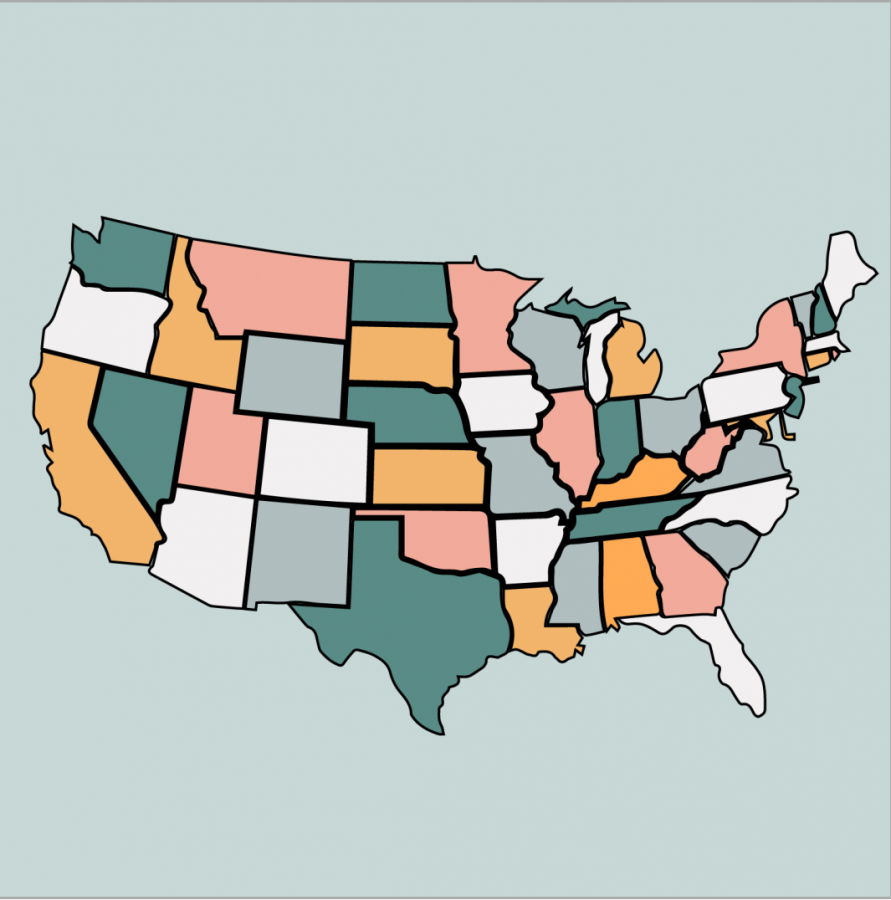Opinion | America’s future will be shaped by its states
Oct 3, 2019
For most of the 20th century, people looked toward the federal government to solve their problems. Even in the latter part of the 20th century, through the Bush Jr. administration, where market-oriented solutions were rising in popularity, the federal government still managed to create those solutions.
While the way the federal government operated for Americans fundamentally pivoted, Washington was still functional. This has changed since the Democrats lost the House in 2010, following the election of President Barack Obama, and has resulted in a divided government with constant gridlock.
Today, the United States stands at a crossroads. The federal government has proven to be inept at passing any major legislation and the cultural rifts occurring within the country are widening. This political stalemate may put the country in a place it hasn’t been for nearly a century — emphasizing the role of the individual state and the philosophies its people seek to model.
States on both sides of the linear ideological spectrum have already begun to further immerse themselves into their political leanings. A plethora of conservative states have passed extremely tough anti-abortion laws while liberal states have been expanding the right for a woman to choose. While the federal government scraps climate change policy, California is making its own strategy to keep up with emission goals. The much needed discussion on immigration has lost all sincerity as both pro and anti-immigration groups have dug deeper into their ideological trenches, separating both groups from reality. Education on LGBTQ individuals has expanded in certain states, yet “no promo homo” laws are still applied in six southern states.
These policy aspects of the political rift directly correlate to race, religion and cultural norms of each group. While the conservative states emphasize the United States as a culturally homogenous Christian nation, the liberal states believe the country to be a beacon for multiculturalism.
Get The Daily Illini in your inbox!
With such a stark contrast among the people, America needs the federal government to have good-faith discussions about making ends meet to ensure the stability of the country.
Unfortunately, there is no good reason to believe that Washington will retain functionality in the near future. Despite America moving ideologically leftward in the near term, as a reaction to a plethora of socioeconomic issues and Donald Trump’s presidency, the seating structure of the Senate will be hard for Democrats to overcome. With all states having an equal two senators, getting a majority Democratic Senate will prove to be an immense challenge.
This is especially apparent in the moderate Democrats who still lost their Senate seats despite the “blue wave” that was the 2018 elections in the House. While the Democrats netted an astounding 40 seats in the House, they suffered a net loss of two seats in the Senate.
People residing in states with mixed party senators will likely find themselves in positions to vote unilaterally for the state’s majority party the next go-around, leaving another divided Congress, no matter who is president after 2020.
The presidency itself may be prone to wider Electoral College — popular vote disparities. Two of the last five presidential elections have already shown results where the loser of the popular vote obtained the presidency. In 2000, Al Gore won the popular vote by .5%. In 2016, Hillary Clinton won the popular vote by 2.1%.
Following current trends, that margin has the potential to only widen as the years go on. If a candidate in the next few decades loses the popular vote by around 5% but attains the presidency by Electoral College, the president will be seen as illegitimate by a strong majority of the citizenry. Washington will almost certainly not be functional and the states will have to take steps in the directions that their political and cultural base desires.
The worst case of this growing disparity in ideology could put the United States at a point of uncertainty perhaps not tested since the Civil War. As states begin to tread further along the axis of their political ideologies, the United States might have a society composed of two distinct governmental cultures, varying in degree by policies created by state assemblies.
To some extent, this change could be welcoming. State and local policies affect people’s lives more so than federal government policies, but the sports-like media coverage of national politics stresses spectacle and not substance.
With Washington at an indefinite standstill, people may utilize their political activism in their state and municipality, where immediate, more impactful change, can be made. It may provide the circumstances for a community-based level of discussion about policy and democracy that the country as a whole drastically needs.
Austin is a senior in LAS.






